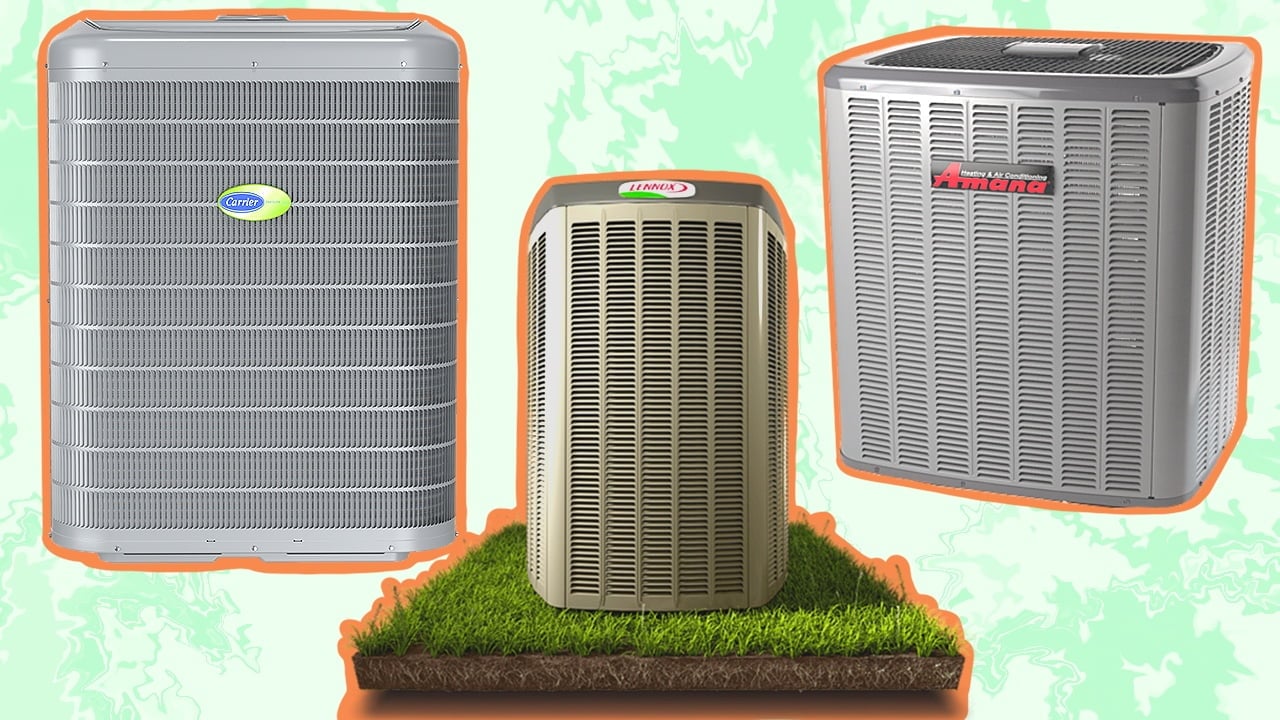Calculating the appropriate air conditioner size for your home is essential for efficient performance and energy conservation. One way of doing this is by multiplying the total square footage of your home by 20 and making a few adjustments, depending on climate, population, location, etc.

Purchasing the wrong air conditioner size can lead to airflow problems and electricity issues that will cost you a lot of money in the future. Besides, when it comes to an HVAC system, a bigger size isn’t always the better. Sometimes, a smaller and more efficient unit can save money and energy. So, it’s best to calculate the minimum air conditioning requirement of your home for optimum energy efficiency and to adhere to the budget.
In this article, I will walk you through some ways to calculate the appropriate size of air conditioners.
Understanding Cooling Capacity And How To Calculate It

What Is A British Thermal Unit Rating?
Be it central heating or single-zoned air conditioning, the British Thermal Unit (BTU) plays an important role in understanding the cooling capacity and energy consumption. In its simplest definition, BTU is a measuring unit that represents the amount of heat required to reduce the temperature of one pound of water by one degree. In terms of an HVAC unit, one BTU translates to the amount of heat an AC unit can vent in one hour.
Calculating The Right Air Conditioner Capacity
Installing a correctly-sized new HVAC unit can reduce overall operating costs and improve the system life, so here’s a step-by-step guide for precise calculation.
1. Calculate The Square Footage Of Your Home
If you want to cool a single, compact room, then calculating the right size for your air conditioner is quite easy. Simply multiply the room’s width and length if you have a square or rectangular space. But if your room is triangular, you need to divide the former result by two as a rule of thumb, as a non-equilateral triangle is half of a square or rectangle.
However, some rooms may have unique shapes, which can make it harder for you to determine the required capacity per square foot. In this case, divide it into smaller squares and triangles and add the result to find precise measurements.
For a central air conditioner, you’ll need to measure the required cooling capacity for the entire home. To do this, you’ll have to repeat the entire process and find the square footage for each room in the house. But if you don’t want heating, cooling, and air conditioning in some parts of your house, remember to exclude them from the equation.
Tip
If your house is perfectly square or rectangular-shaped, you can find the total measurement by multiplying one room’s measurement by the number of floors or square footage of the house.
2. Multiply Square Footage By 20
When it comes to cooling capacity being measured in BTU, 20 BTU per square foot is multiplied as a norm. So, you need to multiply the total sq ft measurement by 20 to determine the perfect capacity for your cooling system.
3. Make The Required Adjustments
The calculations you’ve made so far will give you a rough idea of the ideal cooling capacity in terms of BTU. However, there are several considerations you must factor in while deciding on the capacity, according to Energy Star:
i. Climate Zone
You are required to add or subtract a certain percentage of capacity depending on how much heat your home gets. For example, if your home gets sunlight and is also shaded by a canopy, subtract 10% of the capacity. Meanwhile, if your home receives a lot of sunlight, the capacity of the HVAC system should be increased by 10%.
ii. Population
If more than two people occupy your home or apartment at once, it is a general rule that you should increase the system capacity by at least 600 BTU.
iii. Location
Hotter zones in your home that require the HVAC unit to run for longer need a higher cooling power. For example, if you want an air conditioner specifically for the kitchen, you should add 4000 BTU to its power.
iv. Heat Or Cold Air Leaks
Always keep a margin of error in your calculations since air conditioners, especially large-size central air conditioners, often have cold air leaking through the vents. This puts an additional load on your outdoor unit, requiring higher power.
Finding The Correct System Size
As you may have read above, a residential load calculation can help you find the right-size AC unit. However, you can also determine the appropriate size by finding out the system size already installed. Generally, manufacturers don’t list the system size on the product; instead, it is coded into the model number of the outdoor unit.
For example, a 2-ton unit will have the number 24 coded into its model number - this is because there’s 12,000 BTU cooling power per ton. So, ‘24’ is actually 24,000 BTU, which, when divided by 2 (per ton calculation), comes to 12,000 BTU per unit. In a similar fashion, you can easily decode a model number to find its tonnage (look for the model, not the serial number) by using this simple information:
| Coded Model Number | Weight (tons) |
|---|---|
| 18 | 1.5 |
| 24 | 2 |
| 30 | 2.5 |
| 36 | 3 |
| 42 | 3.5 |
| 48 | 4 |
| 60 | 5 |
Square Foot Heating Guide
Calculating the required BTU per square foot is also important for central heating; however, the calculation for heating is a little different. Firstly, you have to figure out which climate zone your home falls under before moving on to the next step. On average, there are five climate zones in the U.S., United Kingdom, and other large countries - and each zone has a different BTU requirement:
| Zone | BTU/sq. ft. |
|---|---|
| 1 | 30-35 |
| 2 | 35-40 |
| 3 | 40-45 |
| 4 | 45-50 |
| 5 | 50-60 |
So, finding the precise climate zone will help you find how many BTU per square footage is required by your home for even heating. If your building's insulation is tight and sound, choose the lower range, but if you have a poorly insulated home, choose the higher one.
Now, just multiply the number by the total square footage of your home to find the capacity needed for your HVAC system to heat the area. For example, if you live in zone 3 and you have a 3,000-square-foot well-insulated home, the equation will look like this:
- 3000 sq. ft. x 40 heating factor = 120,000 BTU
You can also calculate the BTU output of a gas furnace by multiplying the energy efficiency rating by the input rating listed on the product. For example, if a product has a listed input rating of 80,000 BTU and an efficiency rating of 70%, it will produce the following:
- 80,000 x 0.70 = 56,000 BTU output
Learn About The Variables
Several variable factors such as insulation, number of windows, number of floors, ceiling height, construction type, and even humidity will affect the required British Thermal Unit (BTU) for heating and cooling. It is generally acknowledged that if your home is well-insulated and has modern single-pane windows, you can go for a small-sized HVAC system that’s compatible with the total square footage.
Moreover, in a two-story home, the lower floors put less load on the compressor and thermostat, as the one's above act as insulating layers. So, if you have multiple stories with poor insulation and old-styled windows, it’s best to go for a large-size air conditioner.
General Tips For Finding The Right HVAC System
Finding the type of HVAC system you already have goes a long way in finding the right cooling and heating system for your home. However, if you’re unable to identify it, here are some general guidelines you can follow while purchasing an air conditioner:
- If your home has forced air heat, opt for a 5-ton air conditioning system
- If you have gas heating installed in your home, you’ll require built-in ‘heat pumps,’ which will help in heating and cooling
- A 3-ton AC unit is sufficient for homes with electric heating
- If there’s no forced air heat in your home, you can determine the right-sized air conditioner by calculating the highest BTU heating load (follow the steps previously mentioned).

To Sum It Up
With proper calculation and research, you can easily calculate the right air conditioner for your house. In this article, I have highlighted different techniques for calculating measurements and units, including cooling capacity (BTU), ton per square foot, heating capacity, and output. All of these measurements can contribute to finding an air conditioner that will perfectly cater to your home’s total square footage and ensure even air circulation.
However, it can be quite challenging to figure out what unit to go for, especially if you’ve never had an air conditioning system before. In this case, I recommend calling an HVAC expert and evaluating your home to give you a ballpark figure for perfect air conditioning.
That said, I’ll be signing off. Until next time, take care!
